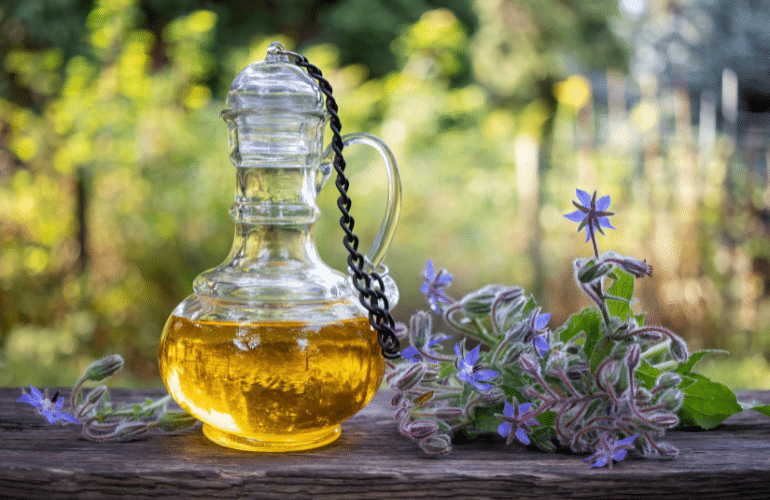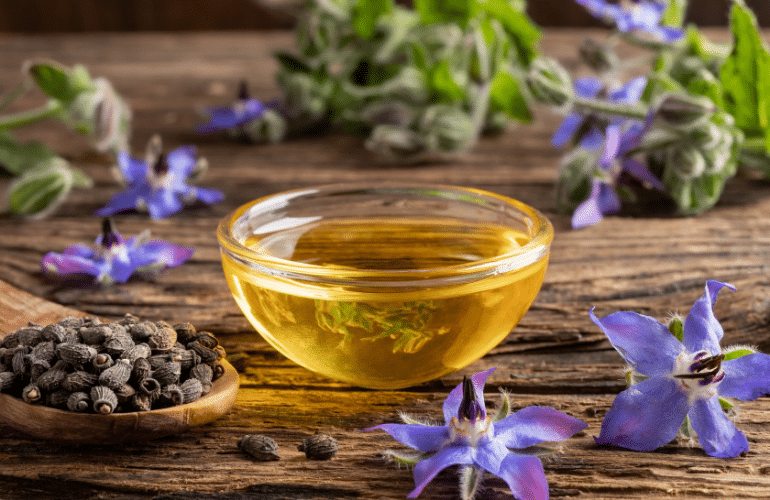Health Benefits
How Borage Oil May Reduce Joint Pain
According to one recent report, around 10 million people in the UK suffer from arthritis, which can lead to pain and inflammation in the joints.
Do you suffer from joint pain on a regular basis? If so, you know that this condition can directly impact your quality of life. Aching joints can make it difficult to walk, play, and work without significant discomfort.
While there are many different treatments, therapies, and medications designed to help alleviate joint pain, you may want to consider going a more natural route. Herbal solutions such as borage oil could help relieve your stiff, painful joints and help you feel your best.
Today, we’re taking a closer look at borage oil and its potential applications!
What Is Borage Oil?
Before we dive into the many borage oil benefits, let’s take a step back. What is this oil in the first place and why should you use borage oil for pain?
Also called borage seed oil or starflower oil thanks to its purple, star-shaped blooms, it’s cold-pressed from the seeds of the Borago officinalis plant. Appearance-wise, it’s light in colour and has a soft, sweet scent.
For centuries, individuals have relied on this oil to help soothe a variety of skin conditions, from eczema to seborrheic dermatitis. It’s deeply moisturizing and non-irritating, and it can deeply relieve the dryness and itchiness that such conditions can cause.
In addition, it’s also used to help relieve inflammation throughout the body. This is why one of the most common borage oil uses is joint support! If you suffer from any condition that leads to stiff, achy, or generally painful joints, applying a layer of the oil could help them feel better.
How Does It Work?
If you’re considering using borage oil for arthritis, you may wonder what makes this application effective. The answer lies in one of the main ingredients found within this substance: gamma-linolenic acid (GLA).
An omega-6 fatty acid, GLA is also considered an essential fatty acid. This means that your body needs it, but it’s unable to make it on its own.
Just like omega-3 fatty acids, omega-6 acids help support your brain function. They’re also critical for your overall growth and development. In addition, GLA is also recognized as a type of polyunsaturated fatty acid, or PUFA. This is a group of fatty acids that assists with a variety of skin and body functions, including:
- Stimulates skin and hair growth
- Regulates metabolism
- Maintains bone health
In addition to GLA, borage oil is also high in other fatty acids, as well as vitamins A, B, D, and E. This is why borage oil uses include support for both dry skin and joint pain.
How exactly does it fight that pain? The short answer is that it helps lower levels of inflammation throughout your body. Let’s take a closer look.
The Link Between Inflammation and Joint Pain
If you apply borage oil to your achy joints and feel gentle, effective relief, you might wonder what’s going on underneath your skin! In short, the GLA in the oil helps to reduce the inflammation that can lead to joint pain.
On one hand, inflammation is a powerful, beneficial tool for your body. It kicks into gear when your “fight or flight” mode is engaged and helps you ward off diseases and illnesses. It also helps you heal from injuries.
If you’ve ever noticed a puffy red scar where a cut is closing, or tender tissue around your joints after you bump them, that’s inflammation in action. Most of the time, it’s acute and short-lived. However, chronic inflammation is an example of too much of a good thing.
Left unmitigated, ongoing inflammation can put an undue amount of stress on your joints, including your:
- Knees
- Wrists
- Shoulders
- Ankles
- Elbows
Conditions such as rheumatoid arthritis can trigger chronic inflammation, which can damage multiple body systems, including the skin, lungs, eyes, heart, and blood vessels.
In addition to joint pain, chronic inflammation can also damage your bones, tendons, ligaments, and cartilage. It can irritate your nerves and lead to a range of symptoms that includes swelling, pain, and stiffness. In many cases, the joint damage becomes both progressive and irreversible.
While these conditions can be painful, there are treatments that can help reduce your discomfort and help you live a comfortable, mobile lifestyle. One of those is borage oil, thanks to the high levels of GLA that it contains.
What role does GLA play in inflammation and why should you consider borage oil for arthritis? Let’s take a closer look at what the research says.
Research on GLA and Inflammation
For decades, scientists have studied the link between GLA, an active ingredient in borage oil, and inflammation within the human body.
In this review, researchers examine how GLA helps regulate and modulate the body’s inflammatory response. It references key findings from one controlled clinical trial that found GLA could help reduce symptoms related to inflammation and lower dependency on non-steroidal anti-inflammatory drugs (NSAIDs) in arthritis.
In addition, the study also found that oil from the Borago officinalis plant (borage oil) contains up to 20% to 26% GLA. This helps explain why so many people use borage oil for pain management, especially when inflammation is the source of their discomfort.
Those findings were echoed in this study, which found that the PUFAs from omega-3 and omega-6 fatty acids play an important role in health and disease regulation. Specifically, they help generate potent molecules that trigger an anti-inflammatory response.
Of the many borage oil benefits you can enjoy, inflammation control could be the most impactful.
Try Borage Oil for Joint Pain
While we know that GLA can help reduce inflammation, more research is still required to understand exactly how borage oil can help lessen the symptoms of joint pain and related conditions, including rheumatoid arthritis. However, studies show that it has great promise and potential.



